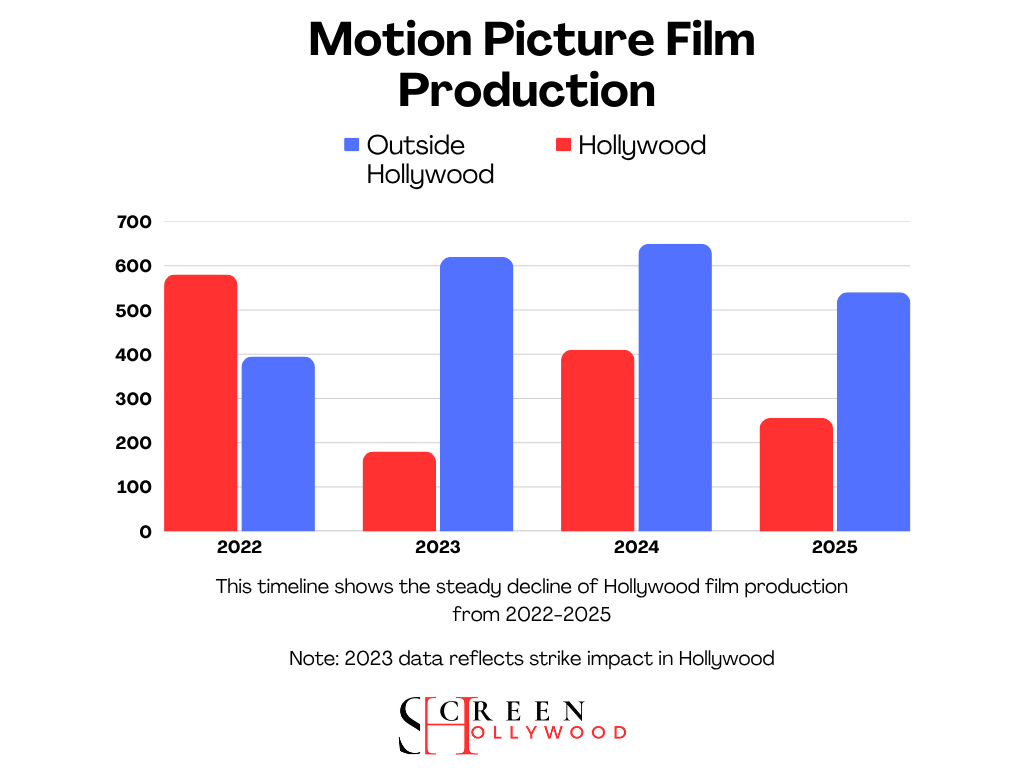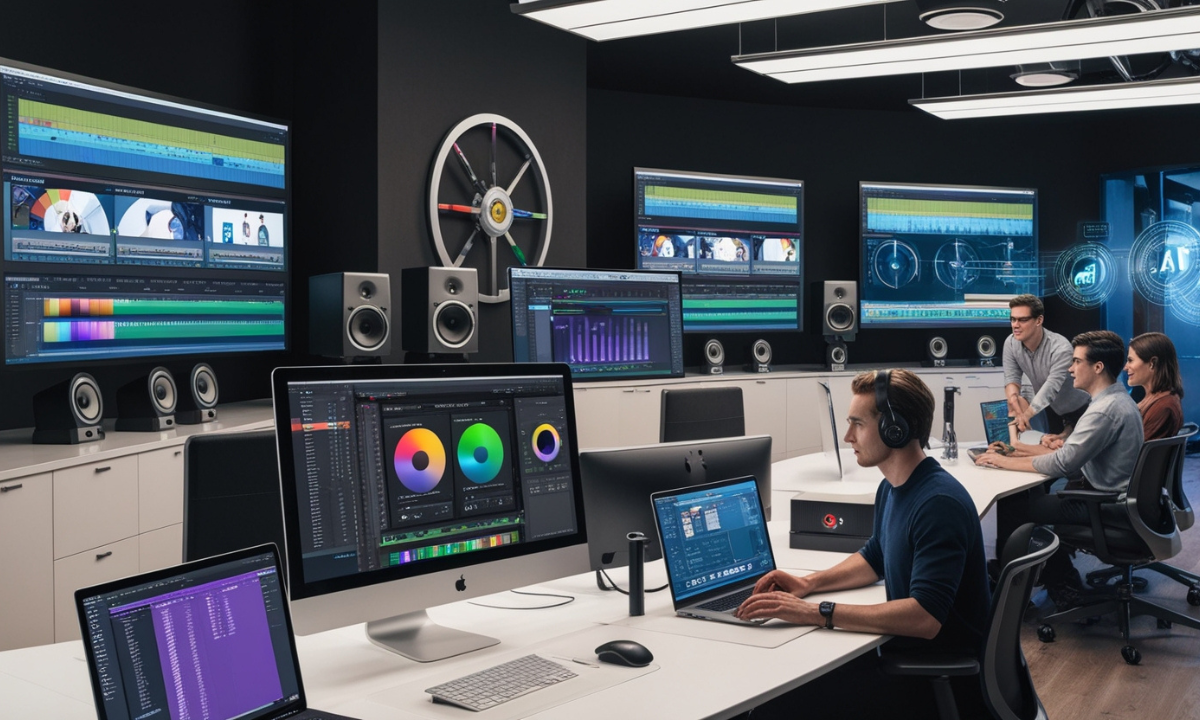Is Hollywood on The Decline?. The glitz and glamour of Hollywood have long captivated audiences worldwide, but recent trends suggest that the film industry is facing significant challenges. From the rise of streaming platforms to fierce competition from other production hubs, the landscape of cinema is evolving rapidly. This article delves into the current state of Hollywood, tracing its decline from the 1920s to the present day, while examining the financial implications for major studios and exploring potential solutions to revitalize the industry.
The Historical Context of Hollywood’s Rise and Decline
Hollywood’s ascent to prominence began in the early 20th century, when filmmakers flocked to Southern California for its favorable climate and diverse landscapes. The establishment of major studios like Paramount and Warner Bros. solidified Hollywood’s reputation as the epicenter of the film industry. However, as the decades progressed, various factors began to contribute to its gradual decline.

The Golden Age of Hollywood
The 1920s to the 1960s are often referred to as Hollywood’s Golden Age. During this period, the industry flourished, producing iconic films and establishing a star-studded culture. The introduction of sound in films revolutionized the medium, leading to an explosion of creativity and innovation. However, this era also laid the groundwork for future challenges.
The Impact of Television
The emergence of television in the 1950s marked a turning point for Hollywood. As households acquired TVs, audiences began to shift their viewing habits, opting for the convenience of home entertainment. This shift resulted in declining box office revenues, forcing studios to adapt their strategies to retain audiences.
The Rise of Independent Cinema
In the 1970s, independent filmmakers began to challenge the dominance of major studios. With lower production costs and a focus on unique storytelling, independent films gained traction, attracting audiences seeking fresh perspectives. This trend further fragmented the market, making it increasingly difficult for Hollywood to maintain its monopoly.
The Current State of Hollywood
Fast forward to the present day, and Hollywood finds itself at a crossroads. The industry is grappling with a myriad of challenges that threaten its status as the entertainment capital of the world.

Declining On-Location Filming
Recent statistics reveal a stark decline in on-location filming in Los Angeles. According to FilmLA, the first quarter of 2025 saw a 22% decrease in shoot days compared to the previous year. This decline is indicative of a broader trend, as only 20% of North American TV shows and films are now produced in California. The allure of Hollywood is waning, as producers increasingly seek more cost-effective alternatives elsewhere.
The Streaming Revolution
The rise of streaming platforms like Netflix, Amazon Prime, and Disney+ has fundamentally altered the way audiences consume content. With a vast library of films and series available at their fingertips, viewers are less inclined to visit theaters. This shift has led to a significant decline in box office revenues, forcing studios to rethink their distribution strategies.
Financial Struggles of Major Studios
The financial impact of these changes is evident in the struggles faced by major studios. Disney, for instance, has reported substantial losses in its theatrical division, prompting the company to re-evaluate its approach to film production. Similarly, Warner Bros. has faced challenges in adapting to the new landscape, leading to layoffs and restructuring efforts.

The Competition: Domestic and International Rivals
Hollywood is no longer the sole player in the film industry. Domestic rivals like Atlanta and New York, along with international contenders such as Canada and Australia, are luring productions away from California with attractive financial incentives. The screen Hollywood team completed a study spanning 2022-2025, and the data is stark. The data shows a steep decline which commenced in 2023. When we factor the California artist strikes in 2023, its clear to see Hollywood hasn’t really recovered.
The Appeal of Lower Production Costs
Many states and countries have recognized the economic potential of film production and are offering lucrative tax incentives to attract studios. For instance, Texas recently passed legislation to double its funding for film and TV production, making it an appealing destination for filmmakers seeking to cut costs. This trend poses a significant threat to Hollywood’s dominance.
The Globalization of Film Production
As production costs rise in California, filmmakers are increasingly looking abroad for more affordable options. Countries like Canada and Australia have become popular alternatives, offering not only financial incentives but also diverse filming locations. This globalization of film production further erodes Hollywood’s once-unassailable position.
The Financial Impact on Below-the-Line Crew Members
The decline of Hollywood is not just a concern for studio executives; it also has dire implications for the many below-the-line crew members who rely on the industry for their livelihoods. These professionals, including grips, electricians, and set designers, are facing an uncertain future as job opportunities dwindle.
The Risk of Talent Exodus
As Hollywood’s allure diminishes, there is a growing risk that talented crew members will seek opportunities elsewhere. The prospect of relocating to states or countries with more favorable production environments could lead to a talent drain, further weakening the industry’s ecosystem.
The Importance of Job Security
For many below-the-line workers, job security is paramount. The decline in production activity has resulted in fewer job opportunities, leaving many struggling to make ends meet. This situation underscores the need for Hollywood to take proactive measures to retain its workforce.

Potential Solutions for Revitalizing Hollywood
To address the challenges facing Hollywood, industry stakeholders must consider a range of solutions aimed at revitalizing the film industry and restoring its status as a global leader. Some of which could include:
1. The “Digital Backlot” Initiative & Tech-Forward Rebate
Instead of just competing on standard tax incentives, Hollywood could offer a “tech bonus”—an additional, significant rebate for productions that utilize cutting-edge, California-based technologies. This would specifically reward films that pioneer the use of virtual production (like “The Volume“), advanced AI-driven VFX, and next-generation sound design from local companies. This shifts the incentive from simply being “cheap” to being the world’s most advanced place to shoot, cementing Hollywood as an innovation hub, not just a location.
2. The Hollywood “Story Incubator” Program
Modeled after tech incubators like Y Combinator, this program would be a public-private partnership to find and develop the next generation of powerhouse storytellers. It would provide seed funding, mentorship from industry veterans, and access to studio resources for a diverse cohort of writers and directors. The program would culminate in a “Pitch Festival” where major studios and financiers get a first look at these polished, market-ready projects. This directly tackles the creative pipeline issue, ensuring a constant flow of fresh, original IP originates from within the Hollywood ecosystem.
3. The “Studio Zone Concierge Authority”
This would be a single, powerful entity with the authority to streamline the notoriously complex process of filming in Los Angeles. Acting as a one-stop-shop, the Concierge would have the power to fast-track permits across all city/county departments, coordinate street closures, and manage a live database of available public and private filming locations. By making the logistical process radically easier and more predictable than in any other major city, Hollywood could offer an invaluable incentive of time and efficiency, which often matters as much as money.
4. The “Open Set” District
This initiative would transform underutilized areas or parking lots in Hollywood into permanent, modular, and highly functional film sets that double as public spaces. Imagine a stylized “1940s New York” block or a “Futuristic Cyberpunk Alley” that is always camera-ready with built-in power and rigging points. When not in use for a production, these areas would serve as unique, immersive parks and tourist attractions. This not only provides ready-to-use infrastructure for filmmakers but also revitalizes the physical brand of Hollywood, making it a living, breathing movie set.
5. Global Knowledge Exchange & Dormant IP Program
Leverage Hollywood’s greatest asset: its century of experience and intellectual property. Create a formalized program where veteran Hollywood craftspeople (editors, cinematographers, production designers) lead masterclasses for filmmakers in emerging global markets (e.g., Nollywood, Southeast Asia). In exchange, studios would gain co-production opportunities and creative insights. The second part of the program involves opening up archives of “dormant IP”—unproduced scripts and forgotten characters—for these international partners to reinterpret for modern global audiences, with a stipulation that key post-production work must be completed in Hollywood. This turns a potential brain drain into a global creative collaboration, with Hollywood at its center.
Expanding Tax Incentives
One of the most effective strategies for attracting productions back to California is the expansion of tax incentives. By increasing the funding allocated to film and TV tax credits, the state can create a more competitive environment that encourages studios to keep their productions local.
Fostering Collaboration with Streaming Platforms
Rather than viewing streaming platforms as competitors, Hollywood should explore opportunities for collaboration. By partnering with these platforms, studios can create exclusive content that drives audiences back to theaters while also benefiting from the distribution capabilities of streaming services.
Investing in Infrastructure
To remain competitive, Hollywood must invest in its infrastructure. Upgrading sound stages, post-production facilities, and other essential resources will enhance the overall production experience and attract filmmakers looking for top-notch facilities.
The Role of Government and Industry Leaders
The responsibility for revitalizing Hollywood does not rest solely on the shoulders of studio executives. Government officials and industry leaders must work together to create a supportive environment for film production.
Legislative Action
California’s government has a crucial role to play in shaping the future of Hollywood. By enacting legislation that supports the film industry, lawmakers can help ensure that the state remains a viable option for filmmakers. This includes not only tax incentives but also streamlined permitting processes and support for workforce development.
Advocacy for Workers’ Rights
As Hollywood navigates its challenges, it is essential to prioritize the rights and well-being of workers in the industry. Advocacy efforts aimed at securing fair wages and job security for below-the-line crew members will help maintain a robust workforce and foster a sense of community within the industry.
The Future of Hollywood: A Path Forward
While the challenges facing Hollywood are significant, there is still hope for the industry’s revival. By embracing change and adapting to the evolving landscape, Hollywood can reclaim its position as the entertainment capital of the world.
Embracing Innovation
Innovation will be key to Hollywood’s resurgence. By exploring new storytelling formats, leveraging technology, and embracing diverse voices, the industry can create compelling content that resonates with audiences.
Building a Sustainable Ecosystem
To thrive in the long term, Hollywood must focus on building a sustainable ecosystem that supports all stakeholders, from studio executives to below-the-line workers. This includes fostering collaboration, investing in education and training, and prioritizing the well-being of the workforce.
Conclusion
Hollywood stands at a critical juncture, facing challenges that threaten its legacy as the heart of the film industry. However, by recognizing the need for change and taking proactive steps to address these challenges, the industry can pave the way for a brighter future. With a renewed focus on collaboration, innovation, and sustainability, Hollywood has the potential to rise from the ashes and reclaim its status as a global leader in entertainment.





























